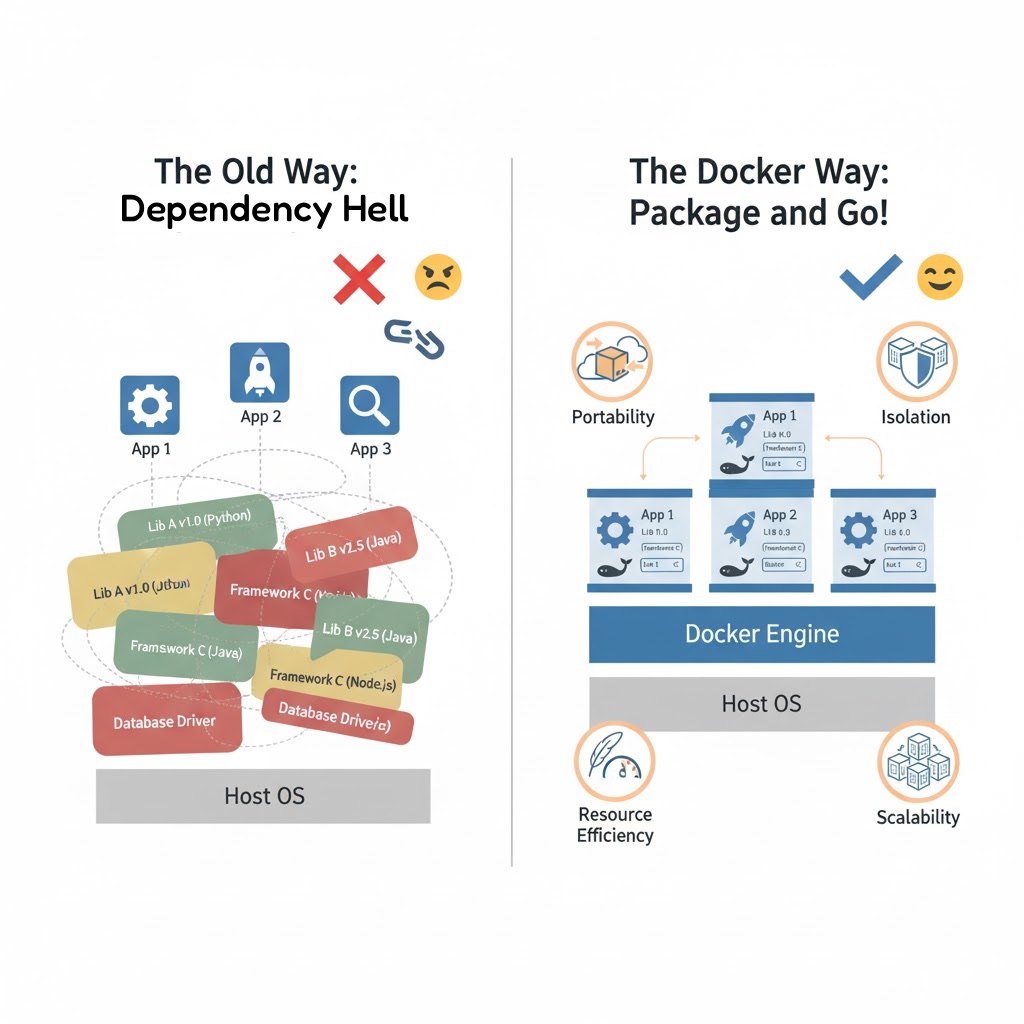Getting Started with Docker
First: why use Docker at all?
Before touching commands, it helps to know the problem Docker solves. Apps rarely run the same way on every machine—different OS versions, missing libraries, conflicting dependencies. Docker smooths that out.

What Docker is (in plain English)
Docker is an open-source tool that lets you package your app and everything it needs into a small, portable unit called a container. You build it once, then run it pretty much anywhere that has Docker.
How it works: containers
- The old way: Your app depends on specific system packages and versions. Setting up a server meant installing them just right—and hoping nothing else on the machine broke.
- The Docker way: You define your app’s environment in a file, build an image, and run it as a container. The container has your code plus its dependencies, isolated from the rest of the system.
Why developers like Docker
- Portable: Runs the same on your laptop, CI, or production.
- Isolated: No “works on my machine” fights—dependencies live inside the container.
- Lightweight: Shares the host kernel, so it starts fast and uses fewer resources than a VM.
- Scales easily: Spinning up more containers is straightforward, which plays nicely with the cloud.



